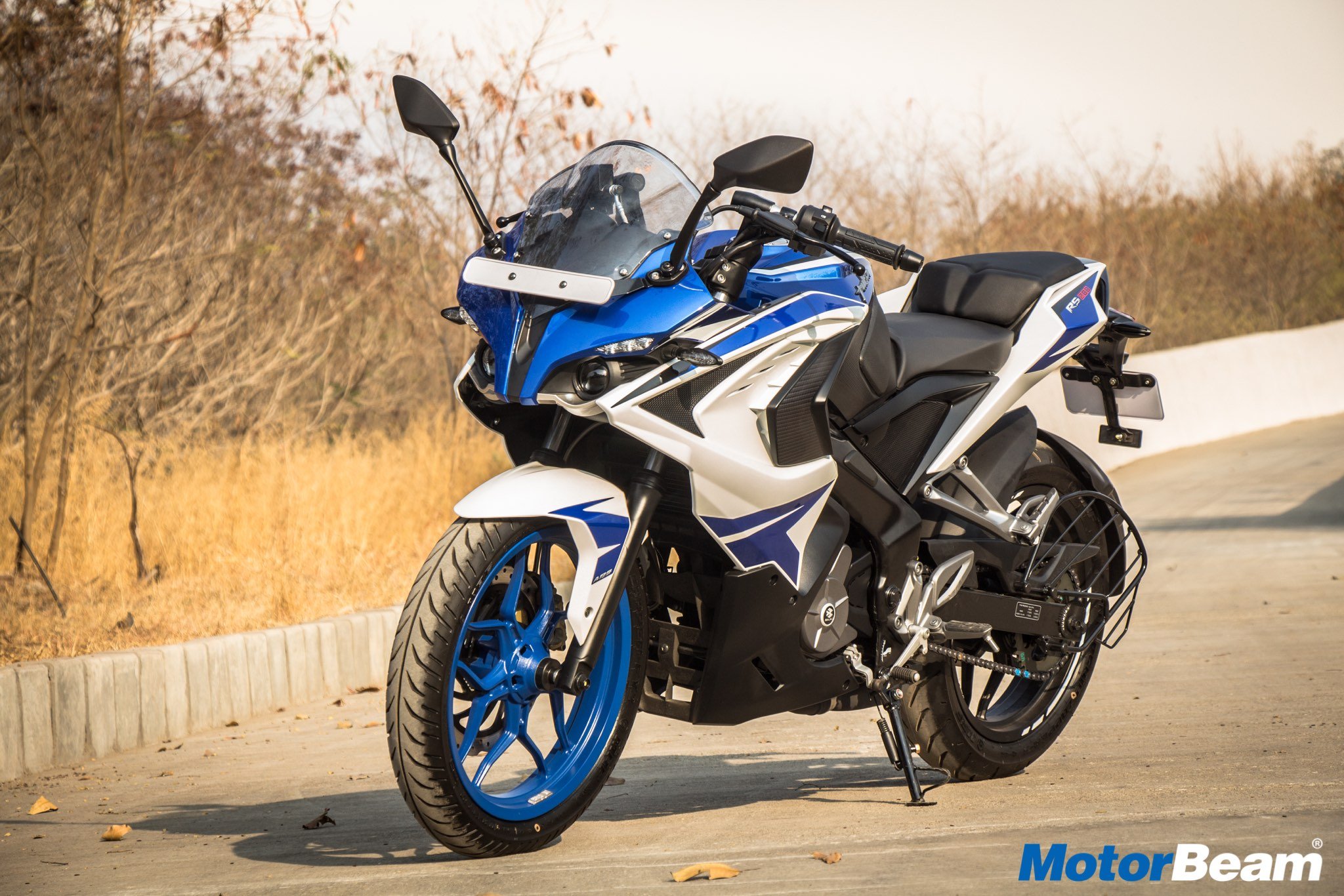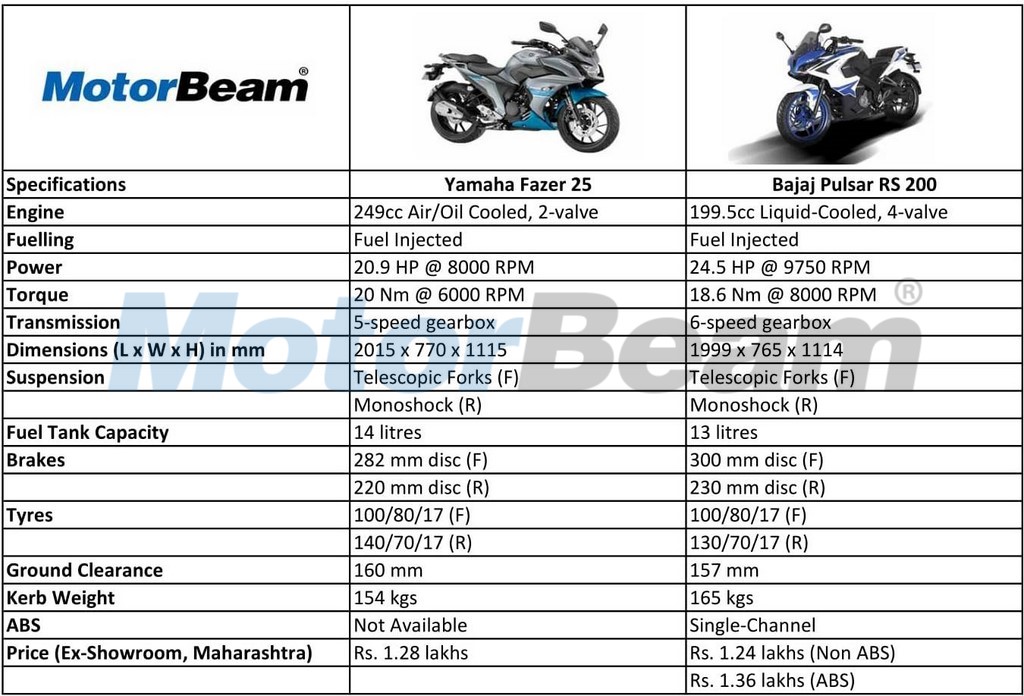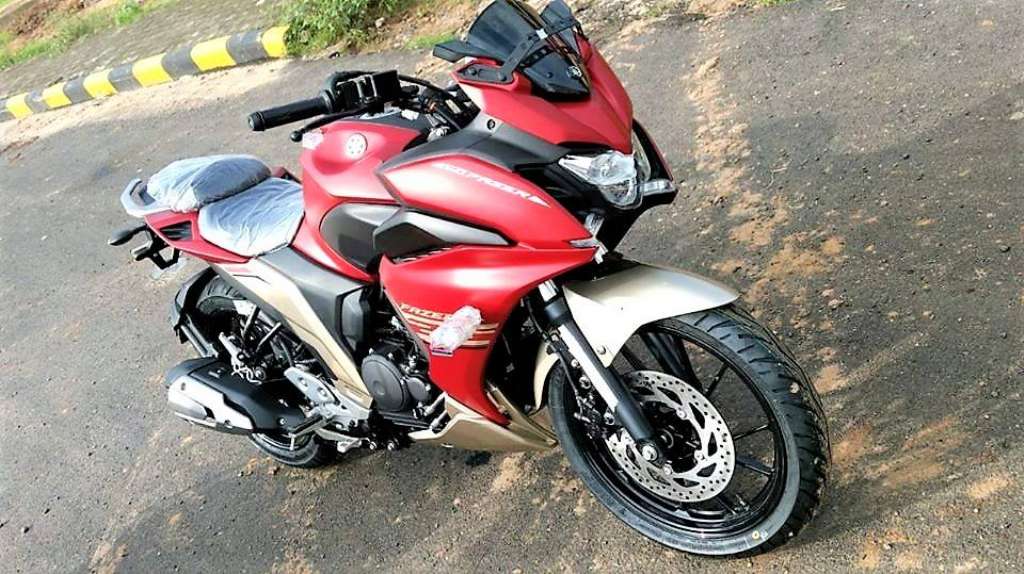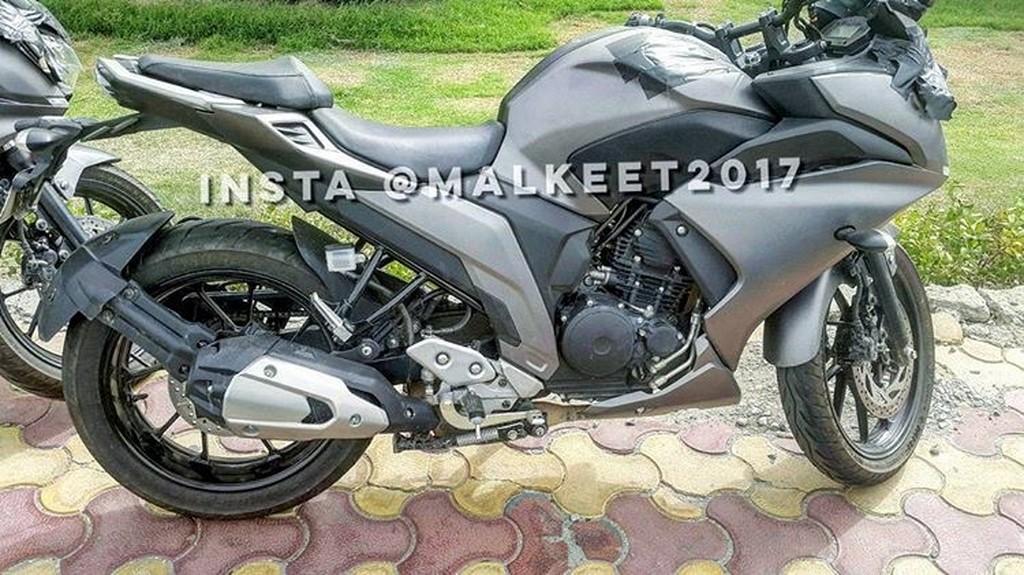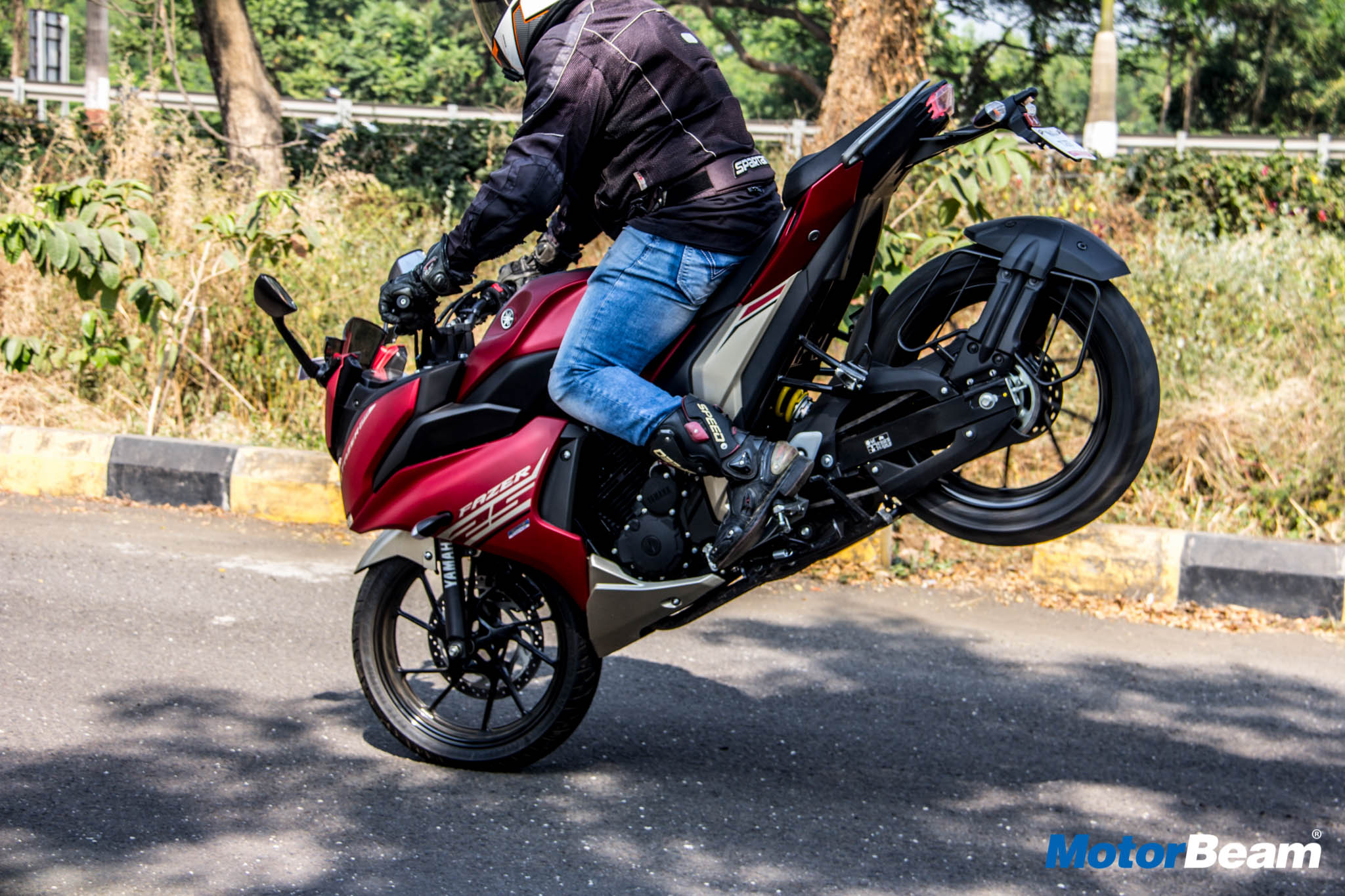Yamaha has launched the Fazer 25, to take on the Bajaj Pulsar RS 200. Question is, how many will find the Fazer 25 good looking?
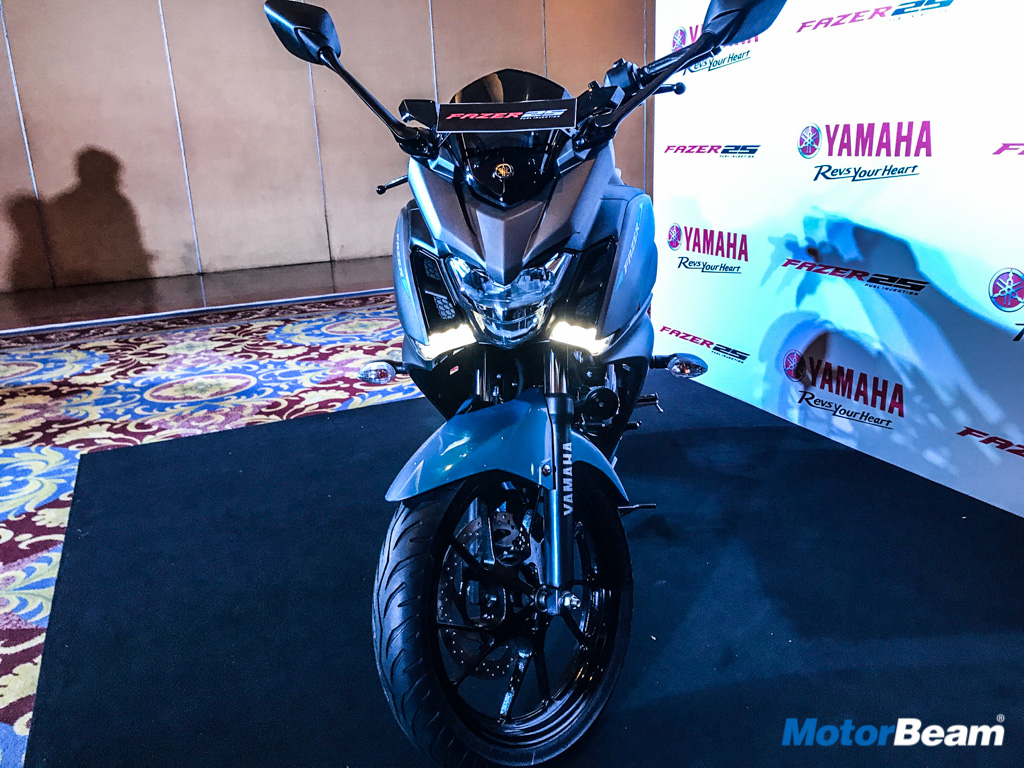
The entire biking fraternity turned fickle-minded looking at the spy shots of the Yamaha Fazer 25 some weeks back and people were wondering what made Yamaha design a full-faired FZ25, the way they have designed it. Nonetheless, Yamaha has launched the Fazer 25 in the Indian market to rival the Bajaj Pulsar RS 200, we do a spec comparison to find out how these two motorcycles fare against each other.
Design & Looks – Let’s start with the newest kid on the block, the Yamaha Fazer 25. Design-wise, Yamaha has done a fair job in executing the fairing design, looks big, bulky and will give you a big-bike feel. However, Yamaha could have given the Fazer 25 a dual-headlamp setup (like the Fazer 150) which would have upped the desirability quotient of the Fazer 25 significantly. But Yamaha has used the same tri-LED headlamp from the FZ25.
The Bajaj Pulsar RS 200, in comparison to the Fazer 25 looks much much better, especially, with the 2017 Laser-Edged body graphics. The previous Pulsar RS 200 had a busy design going against it, but Bajaj has taken care of that in the 2017 version. The dual projector headlamps and the asymmetrically painted alloy wheels add to the looks of the bike. If I had to pick one only on the basis of looks, hands down, it’d be the Pulsar RS 200.
Dimensions – The length, width and height are there in the image above, what I’d instead talk about is the wheelbase on both the bikes. The Bajaj Pulsar RS 200 has a wheelbase of 1355 mm while the Fazer 25 has a wheelbase of 1360 mm. What this means is shorter the wheelbase, better the flickability and vice versa is true for high speed stability.
Powertrain & Transmission – The Fazer 25 gets the same 249cc single-cylinder, oil and air-cooled motor with fuel-injection from the FZ25. The Fazer 25 also makes an identical 20.6 HP of power and 20 Nm of torque from this engine. This motor comes matched to a 5-speed gearbox. The Pulsar RS 200 on the other hand, is powered by a 199.5cc, single-cylinder mill similar to the one on the Pulsar NS 200 but sees improvements via the addition of liquid-cooling and fuel-injection.
This 199.5cc powerplant makes 24.5 HP of power and 18.6 Nm of torque. Apart from being more powerful than the Fazer 25, the Pulsar RS 200 also has the advantage of an extra gear. The Pulsar RS 200’s engine comes matched to a 6-speed gearbox. The Fazer 25’s drivetrain is better suited for city commutes with the strong bottom-end performance, while the Pulsar RS 200 is a blast on the highways with its extra power and gear.
Features – The Fazer 25 gets LED DRLs, LED headlamp, a full digital instrument cluster and a fatter 140 section rear tyre. The Pulsar RS 200 gets LED DRLs, dual-projector headlamps, clip-on handlebars and more importantly a single-channel ABS as an option. This is where the Yamaha Fazer 25 again lacks behind.
Verdict – The Fazer 25 looks decent but not great. I’m neither a Bajaj or a Yamaha fanboy, but if I were in the market looking for a full-faired sports tourer, eyes closed, I’d go book a Pulsar RS 200. Better features, more powerful, Bajaj’s after-sales network is even better when compared to Yamaha’s. However, don’t go by on paper figures, if the FZ25 is anything to go by, the Fazer 25 will be an equally impressive motorcycle but Yamaha seems to have positioned it wrong by calling it a tourer because the only touring friendly feature it has is a dual horn!
Yamaha Fazer 25 vs Pulsar RS 200
